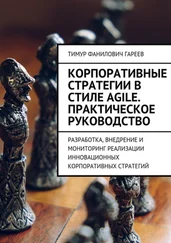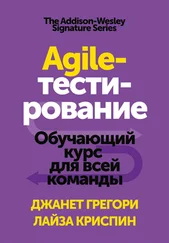Self-organization also assumes that a team will eventually learn to avoid or resolve conflict. However, conflict can easily tear a team apart. Organizational psychologist Marta Wilson writes about the dangers of conflict if it is allowed to persist.
“Once disagreement takes on a life of its own, the chance that resolution will arise simply out of the group dynamic decreases, and a real conflict begins to gain a foothold.” 12
Having leaders available to help teams to resolve conflicts is essential. 13 Such teams are therefore not entirely self-organizing, but are mostly self-organizing.
Conflict is a natural result of differing opinions being discussed. It is an outcome of group creativity. 14 This means that if a team avoids conflict, it might be doing so by stifling discussion of important topics. It is therefore important to view a moderate level of conflict as natural and valuable, as long as people behave respectfully. Avoiding conflict is not a good strategy, but since conflict can lead to team disruption, having external leaders available who can help to stabilize things is important.
Leadership is a critically important issue, because if you have good leadership, the methodology that your teams use will matter less; things will likely go well. Conversely, if you have bad leadership, things will not go well—no matter what methodology your teams use.
This means that the questions of leadership and authority cannot be bypassed. We cannot remove leaders from the equation. Leadership and authority—formal or informal—will always exist in any collection of people, and we must take it into account and not wish it away.
Dimensions, Modes, Forms, and Directions of Leadership
Leadership is influence : a person is a leader if they have influence over others. This includes influence of any kind.
You might have influence over a friend, but you don't have actual authority over them. Your influence might lie in their respect for your ideas or your enthusiasm, which is catching. Whatever the source, that kind of influence does not come from having explicit authority.
Thought leaders usually have no direct authority over others. People read Deepak Chopra's books because they respect what he says. In that way, he influences them; he leads them. His readers have agency. They do not follow Chopra on command, but they do follow him—willingly—because they believe that he has insight. People often follow others because they feel those others have insight. One can follow someone even without fully understanding the other, if one trusts the insight and judgment of the other.
What about the Path-Goal leadership model? In those terms, we might say that Chopra's leadership style is both achievement oriented and supportive. It is achievement oriented, because he describes ideas for people to embrace, thereby challenging them; and his style is also supportive, because his advice pertains to their well-being, rather than to achieving Chopra's own objectives.
Chopra is a thought leader. On a team, there are often people who develop influence through thought leadership. They might have a great deal of experience or they might have deep knowledge about a topic or they might have shown that they are very smart or think things through well.
Others on a team might develop influence through their force of personality: they are persuasive, or they project an air of authority. They look, sound, or act “like a leader.”
It is also not uncommon for cliques to emerge among groups of people, including work teams. A clique can be a source of power: if one attains influence within a clique, the clique can exert collective influence over the entire group, through the force of its numbers. If the clique has a leader—which is often the case—then that leader, in effect, can control the entire group, becoming, in effect, a directive leader.
This clique control pattern is described by Leader Member Exchange (LMX) theory, 15 which is primarily a descriptive theory rather than an explanation of why people behave that way. LMX theory observes that “in-groups” or cliques naturally form, and therefore intentional intervention is needed to prevent them or dismantle them. Doing so requires either authority or explicit preventions such as group voting, but even with such preventions, people still develop influence; thus, we are back to the power of informal influence and its ability to circumvent any procedural safeguard.
It is important to note that any type of influence is a kind of authority; it is a degree of authority that others give to someone over themselves. They follow the influencer willingly, but they still follow. This is informal authority, and just as formal (explicitly given) authority can be taken away by whoever granted it, informal authority can be taken away by those who follow.
A leader can delegate to others; they thereby lend their authority to those others—whether the authority is formal or informal. A democratic vote is a mechanism by which a group delegates their collective authority to a single member, nominating the person as their leader. That leader then might operate in a directive, achievement-oriented, participative, or supportive manner.
Authority can also be constrained. For example, one might have authority over whether a team can release a product to the users, but one might not have any other kind of authority. As another example, one might have authority over product feature decisions within a team, but no other kind of authority.
We mentioned Deepak Chopra as a thought leader, which is a kind of “soft” leadership—that is, leadership that does not work through making commands. It is not directive. Deepak is not telling anyone what to do; rather, people read his advice and incorporate it into their thinking. In that way, they reflect and learn and ideally grow in their understanding of things. There are some specific modes of soft leadership: coaching , mentoring , teaching , coordinating , facilitating , and inspiring or otherwise motivating .
A coach is someone who helps someone to improve in their work, operating both in an achievement-oriented and participatory style. A mentor is someone who helps another to improve their situation, which might include improving their work. That is supportive leadership. A teacher is someone who trains someone in a specific domain of knowledge. Good teachers not only train but operate as a coach as well, and sometimes a mentor, and so effective training often requires all four of the Path-Goal styles of leadership.
Of course, there is significant overlap in the roles of coach, mentor, and teacher. These are all forms of leadership, because the person being helped looks to the coach, mentor, or teacher for guidance, advice, knowledge, and insight.
Coordinating is a form of leadership in which one takes charge of the dependencies between what many others are doing and tries to optimally reorder them and inject steps to synthesize the various parts. A coordinator needs at least a little authority—either formal or informal—to get others to rearrange their work according to the coordinator's decisions.
A facilitator is someone who leads a group by coordinating the interactions among the group. Facilitators often lead discussions, during which they make sure that everyone gets a chance to be heard and that the discussion stays on point.
The use of facilitation is common in the Agile community. However, it is often assumed that the facilitator does not need to understand the topic being discussed. Yet, it is not clear how someone who does not understand a topic can determine whether the discussion is going off point.
Читать дальше











